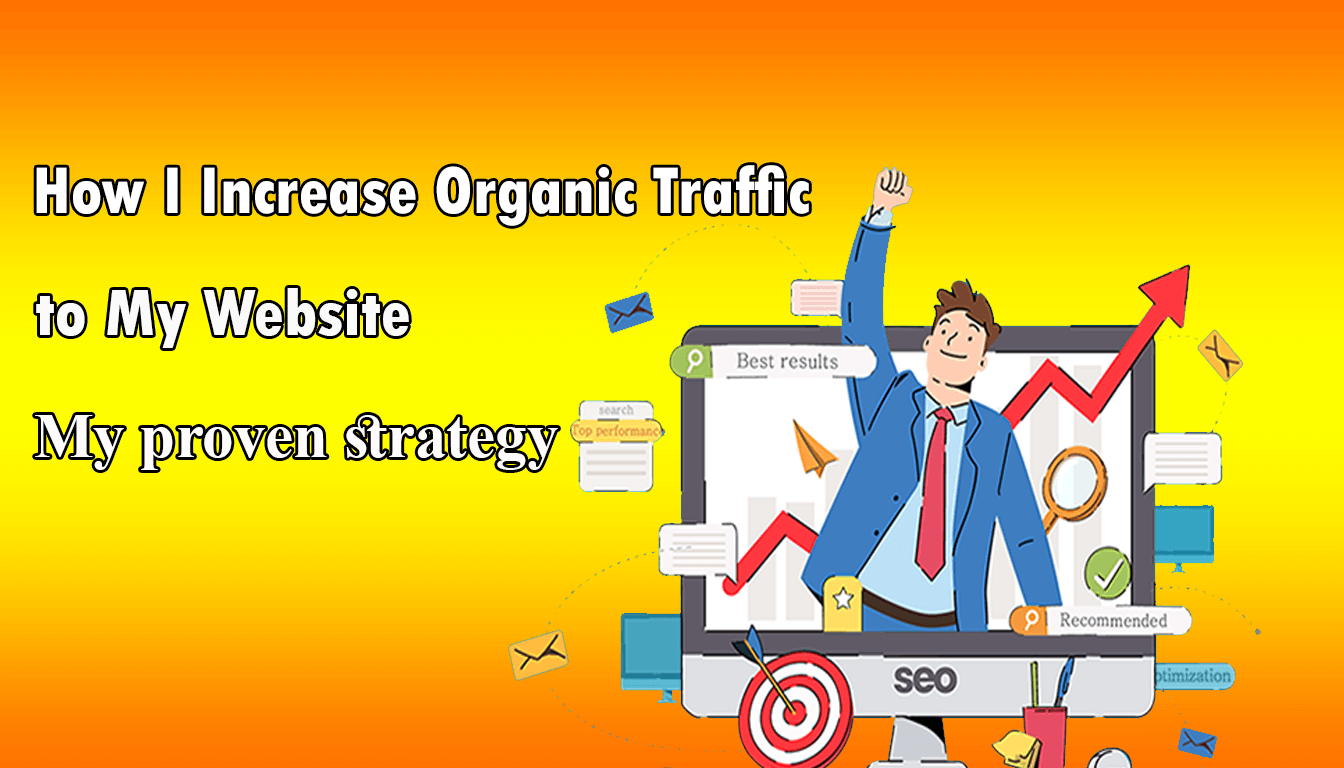The Best Competitor Analysis Tools of the year [2024]
The Best Competitor Analysis Tools of the year [2024]
Competitor analysis is a key activity in every company’s strategic decision-making process. In order to get insights into the strengths, weaknesses, tactics, and market positioning of the rivals, it is necessary to conduct a comprehensive competition analysis, which encompasses numerous phases within the process.Competitor analysis can be made a lot more efficient with the right tools.

Why is competitor analysis important?
For the purpose of strategic market positioning, pricing, and capitalizing on possibilities that rivals have neglected, the information that is acquired via competition analysis will be of great use.Competitive analysis is similar to market mapping or comparable analysis as it develops a thorough view of a given industry. It can be done by consultants, internal company strategy teams, and marketing professionals.
Competitor analysis will generate valuable, in-depth information on how similar industry players are doing. Management can mirror the company's strengths and weaknesses against various types of competitors and set benchmarks for performance. This way, the company can take action on the weaker areas and ensure setting the right KPIs for growth.
Furthermore, finding all competitors and studying their performance is necessary to maintain and improve the company’s position in the market. Early identification of potential threats or unique value propositions allows for the adjustment of strategies to counter them effectively.
Data about competitors is helpful in developing a plan that is more successful and in getting an advantage over other businesses. Knowing both big and small competitors helps to understand where a company can differentiate. It can specialize in areas that larger competitors overlook or in areas where smaller competitors cannot match its capabilities.
What is more, competitors may also possess capabilities that the company needs. Competitor data may occasionally assist uncover possible acquisition targets or, the other way around, potential purchasers.
Why is it important to know and understand who all your competitors are?
A broad understanding of the competitive landscape helps a company shield itself from surprises.Ignoring lesser rivals might cause blind spots in the study.
. These competitors might disrupt the market unexpectedly, catching established players off guard if they haven’t been tracking their activities.
New rivals may highlight developing trends and changes in customer preferences before they become widespread.. Less-known competitors might be targeting specific niches or segments of the market that larger players overlook. Recognizing these opportunities can give an advantage in underserved markets.
Small or emerging competitors should also be monitored for innovative ideas. They often have more flexibility to experiment and innovate quickly and disrupt traditional market dynamics.When these behaviors are monitored, it is possible to get new insights into new marketing tactics, product offers, or company models. ‾
Therefore, identify not-so-obvious competitors and monitor competition to adapt strategies accordingly. Keeping track of new competitors ensures that management is fast to make decisions if new disruptive competitors emerge and maintain competitive advantage.
What factors should you consider in competitor research?
There are a few factors to consider when conducting competitor research:
1. Determine all of the competitors and the crucial data points that they possess.
The first step in doing a competitive analysis is to identify both direct and indirect rivals.Collect critical competition data points on owner and key decision makers, location, financials, personnel numbers, and market positioning.
The use of a tool that is specifically developed for doing research on rivals may make identification a great deal less difficult. AI-based technologies such as Inven may employ keywords that describe the real business activity of the company rather than fixed industry codes.
2. Analyze their online presence.
The second stage is to assess how the organization is visible online via websites, social media profiles, news, and marketing.
Evaluate their marketing channels, campaigns, content initiatives, and message. Gather insights into your rivals' SEO performance, keyword rankings, and email marketing initiatives.
In this stage, take advantage of marketing intelligence tools (mentioned later in this article) to grasp the relevant KPIs.
3. Build a corporate profile, highlighting their strengths and limitations.
Build a complete grasp of the competitor's performance across multiple categories, utilizing commonly utilized frameworks. These categories comprise products, market position, financials, marketing, customer experiences, and unique selling points (USPs).
Collect extra bits of information manually from different sources, such as brochures and client interviews, to fill in the data points that are lacking.
Identify rivals' strengths and shortcomings. Consider how they represent themselves in the market and what value they offer to clients. Read consumer reviews, comments, and feedback about your competition. Are they recognized for great customer service, high-quality items, distinctive features, or reasonable pricing? Look at what areas they suffer in.
4. Pinpoint dangers and opportunities for your business.
After completing a comprehensive investigation, identify the possible hazards presented by rivals to your organization. Additionally, mention any market possibilities they may have neglected. Leverage this knowledge to uncover areas where you can distinguish and exceed their performance.
5. Set benchmarks and build a plan.
Benchmarking includes comparing procedures, performance, or goods to rivals or industry leaders. Look at key indicators, such as conversion rates and customer satisfaction, and identify best practices and areas for development.
The competition study will give vital insights to take advantage of the possibilities you've found and alter strategy and KPIs appropriately. Quality data on rivals is also a significant resource for appraising a firm's value via a similar business study.
Competitor analysis frameworks
Competitor analysis frameworks give standardized techniques for obtaining, organizing, and evaluating information.
Here are some of the most widely utilized frameworks in competition analysis:
-
The acronym SWOT refers to the strengths, weaknesses, opportunities, and threats that a certain situation has.
- It's a typically employed framework to develop a picture of a competitive position. Strengths and weaknesses are internal, whereas opportunities and dangers are external to the firm.
-
Perceptual mapping: This graphical tool graphically depicts how people perceive different brands or items in the market. It illustrates the relative standing of rivals based on criteria essential to consumers.
-
Strategic group analysis: This concept includes grouping rivals based on comparable strategies, market sectors, or business models. It helps determine which firms are direct rivals and how they vary from others in the industry.
-
Porter's five forces: Focuses on the competitive factors that form an industry. It involves examining the dangers of new entrants, competitive rivalry, the negotiating power of suppliers and buyers, and the threat of replacements.
-
Critical success factors (CSFs): CSFs are the major areas in which a firm must excel to be successful in its market. It may also entail examining rivals' strengths and weaknesses in regard to these elements.
-
Competitive Profile Matrix (CPM): CPM is a strategic management tool that compares a firm to its top rivals based on key success indicators. It allocates ratings to numerous elements and offers a quantitative evaluation of the competitive position.
-
Product Life Cycle Analysis: This framework follows the phases of a product's lifespan, from introduction to decline. By monitoring where rivals' goods are in this cycle, a corporation may forecast their future actions and change their strategy appropriately.
The choice of framework depends on the exact aims of your study and the level of knowledge you're seeking. Following the step-by-step process to find rivals for every firm is an excellent starting point.
Competitor analysis tools
There are many sorts of competition research tools for distinct objectives. One set of tools is created for market mapping and company performance; others are more for assessing competitors’ efforts in marketing and communications. Using the following tools makes collecting data more efficient:.
Here are some resources for discovering competitors:
-
Inven: Inven is an effective tool for locating rivals and their essential data points. Inven produces a list of rivals using information such as financials, number of workers, website, and description of the firm. All corporate owner and decision-maker information is accessible with just one click. Insights from the search may be utilized to create an overall view of the market.
-
Owler: Owler is a community-based business information research platform delivering competitive insights, news, and notifications. Owler’s members add to the corporate profiles of the firms they work for. They have rivals, industry trends, fundraising activities, and business news, which may be utilized for analysis.
-
Capterra: Capterra is a platform for identifying and comparing software firms. They provide a compilation of customer reviews, ratings, and vendor information across numerous software categories, as well as price model information. Capterra also provides content regarding numerous software categories.
-
G2: G2 is a software marketplace. G2 provides competitive data in the form of comments and evaluations from their customers. Their data may improve comprehension of market positioning and benchmarking. G2 also includes comparison tools to evaluate various software programs side by side, showcasing their features, cost, and customer satisfaction levels.
-
Crunchbase: Crunchbase is a corporate insights platform containing information from early-stage companies to the Fortune 1000. Crunchbase offers information on industry trends and statistics on fundraising rounds, important executives, acquisitions, and partnerships.
Here are some helpful tools for assessing competitors’ web presence:
-
SEMrush: SEMrush is built primarily for marketing insights. They assist in understanding rivals' messages, advertising, and SEO effectiveness. SEMrush’s tools and reports may aid in areas such as keyword research, content analysis, and PR analysis. They also provide domain analytics.
-
Similarweb: Similarweb tracks competitors’ websites and social media performance. They incorporate traffic statistics and competitors’ visitor behavior, plus paid advertising, affiliate marketing, and SEO content. SimilarWeb provides the channels obtaining the most traffic within an industry with regional and demographic data.
-
Mintel: Mintel is a market research organization that delivers research reports and insights into consumer trends. Their solutions include knowledge regarding product introductions, promotions, media channels, and the competitive environment in certain sectors.
-
Ahrefs: Ahrefs is a SaaS startup that offers online SEO solutions. Their application delivers competition marketing research, including backlink profiles, keyword rankings, content analysis, and more. They assist in analyzing competition search traffic and website data.
-
Crayon: Crayon is a competitive intelligence tool that gives information on price, goods, message, and design changes in the market. They analyze competitors’ online presence and automatically assign behaviors to categories for further study.
-
BuzzSumo: Primarily used for content analysis, BuzzSumo lets you understand which content pieces are doing well in each sector. This may offer insights into rivals' content strategies.
-
Moz: Alongside its SEO capabilities, Moz delivers a competitive analysis toolbox to help analyze rivals' search ranks, link profiles, and domain authority.
Conclusion: Combination of tools for optimum outcomes
Competitive analysis is a continuous activity. Competitors might alter strategy, create new goods, or adjust to market changes. It is necessary to map out all the rivals, both the ones that are already well-known and those that are less recognized.
A combination of two tools for separate goals works best for effective competitor research.
Inven's technique can best be utilized to detect all of the hidden rivals and crucial data points for them. To get the greatest results, it is recommended to look into merging Inven with SEMrush or Ahrefs, for example.
One tool is to discover the essential companies in the industry, and another is to comprehend their internet presence.
In-depth awareness of all rivals, regardless of their size or prominence, adds to improved decision-making and competitive advantage.

Adam Pennell
CEO / Co-Founder
Enjoy the little things in life. It's possible that one day you'll look back and realize that they were the significant things. A significant number of persons who fail in life are those who, when they gave up, were unaware of how near they were to achieving their goals.

.webp)


